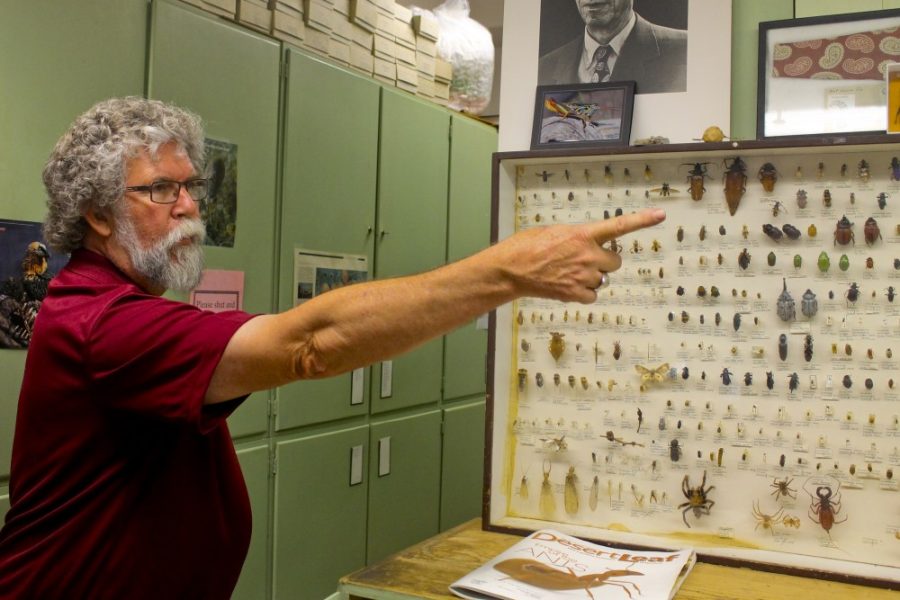For the University of Arizona Insect Collection, several million specimens from the southwestern U.S. and around the world just aren’t enough.
The department has received two grants totaling more than $2 million from the National Science Foundation, as well as $625,000 from supporting scholars, to expand its catalog of anthropods.
The collection is housed on the fourth floor of the Forbes building in the department of entomology, and has been there since it was developed in the early ‘50s, according to Carl Olson, the collection’s associate curator. Olson, who has been curator for the collection for 37 years, estimated that the department has collected somewhere between 50,000 to 75,000 different species, with 20,000 to 25,000 from Arizona.
But the numbers don’t really matter, Olson said.
“There’s an amazing number of species,” he added. “For them (the insects) it’s kind of meaningless, versus a finite number of lizards or mammals or birds or things like that.”
Olson also said that projects for adding to the collection are always ongoing, and cited a “major” project being led by Wendy Moore, another curator and assistant professor of insect systematics. This particular project traps and analyzes various species of insects throughout the Santa Catalina Mountains. Moore also served as a primary investigator on the two recent grants, helped write the proposals explaining the current status of the collection and explained how it could benefit from additional funding.
“We want to expand our knowledge-base from maybe southern Arizona to all of the Sonoran Desert, so maybe include Mexico,” Olson added. “But it’s tough now because of all the drug trade. I don’t go collect down in that area a lot, and that used to be one of the best places to go.”
Despite the challenges that come with adding to the collection, Olson said that the collection’s reputation is what allowed it to receive the millions in grant funding.
“It’s probably the best southwestern collection in the country,” he said, adding that the department has maintained a focus on Arizona insects, but has expanded to various neighboring regions like northern Mexico and throughout New Mexico. “This is one of the premier places to look at insects; the biodiversity here is outrageous.”
With the money now in place, plans for physical expansion of the collection are underway and include complete renovation of the cabinets that the insects are being stored in, as well as the removal of at least one surrounding wall.
The department’s storage equipment, having reached capacity, has also restricted the collection’s expansion. Many specimens are crammed into drawers, overlapping one another in the cramped space. According to Olson, the department hired a carpenter to build the storage units when the collection began, and, while specific dimensions were given, the drawers and cabinets were not all built correctly. This resulted in cabinets being slightly smaller than average storage units used by entomologists around the country, and units that don’t seal properly.
The plan, Olson said, is to have new storage units by September. Curators will then begin transferring the specimens to the new system, which include airtight compacting units that will move along tracks in the floor to provide access to each drawer.
Plans to digitize the collection and put it into an online database are also in the works. The database will collaborate with collections in other southwestern states, and will aid conservation planners, climate change modelers and educators in finding out which species live where, Moore added.
“(Insects) affect our lives in intimate ways,” she said. “It’s important for us to know who’s out there, which species are doing what and what the major threats are for their future, because it will also affect our lives.”









